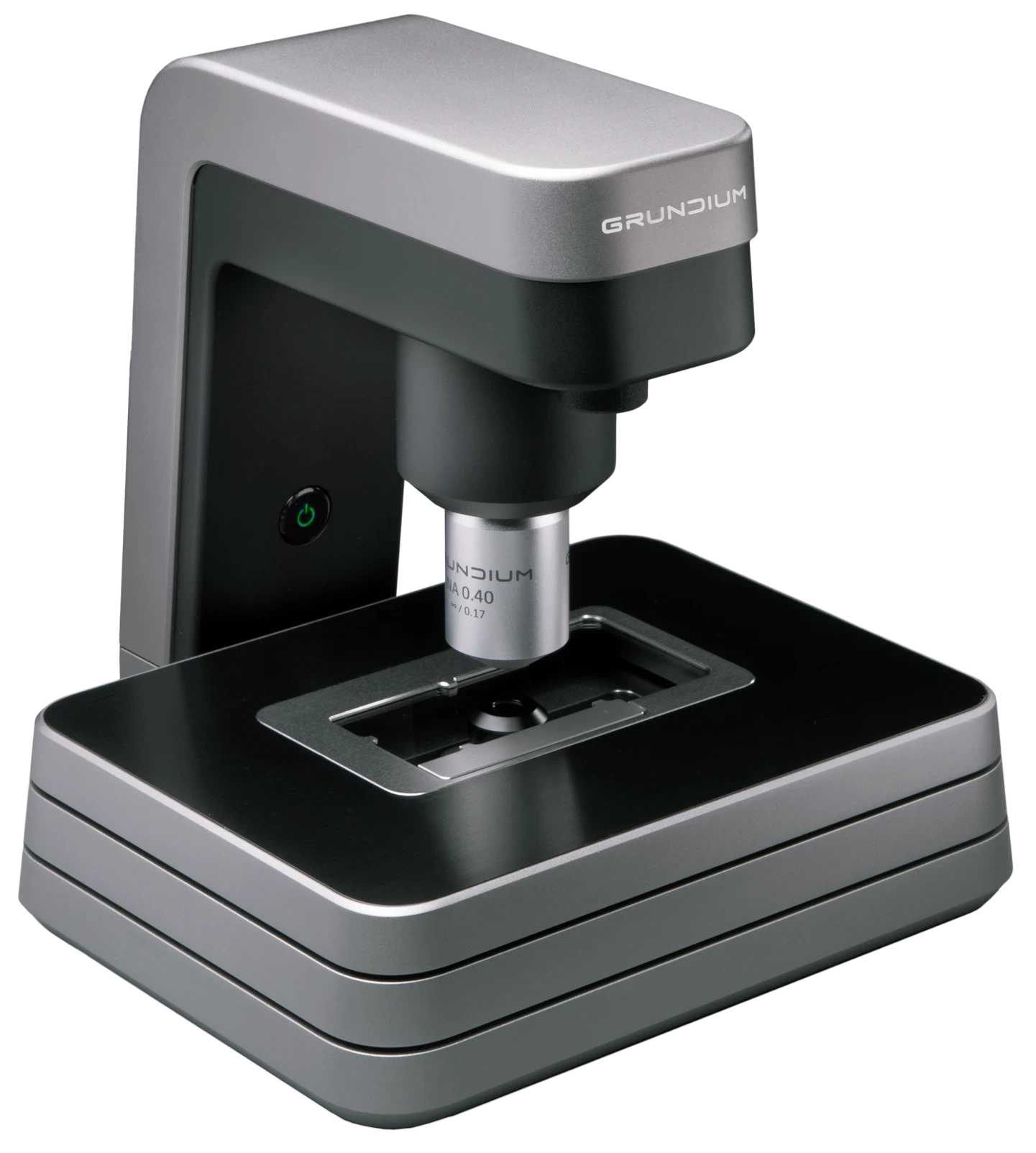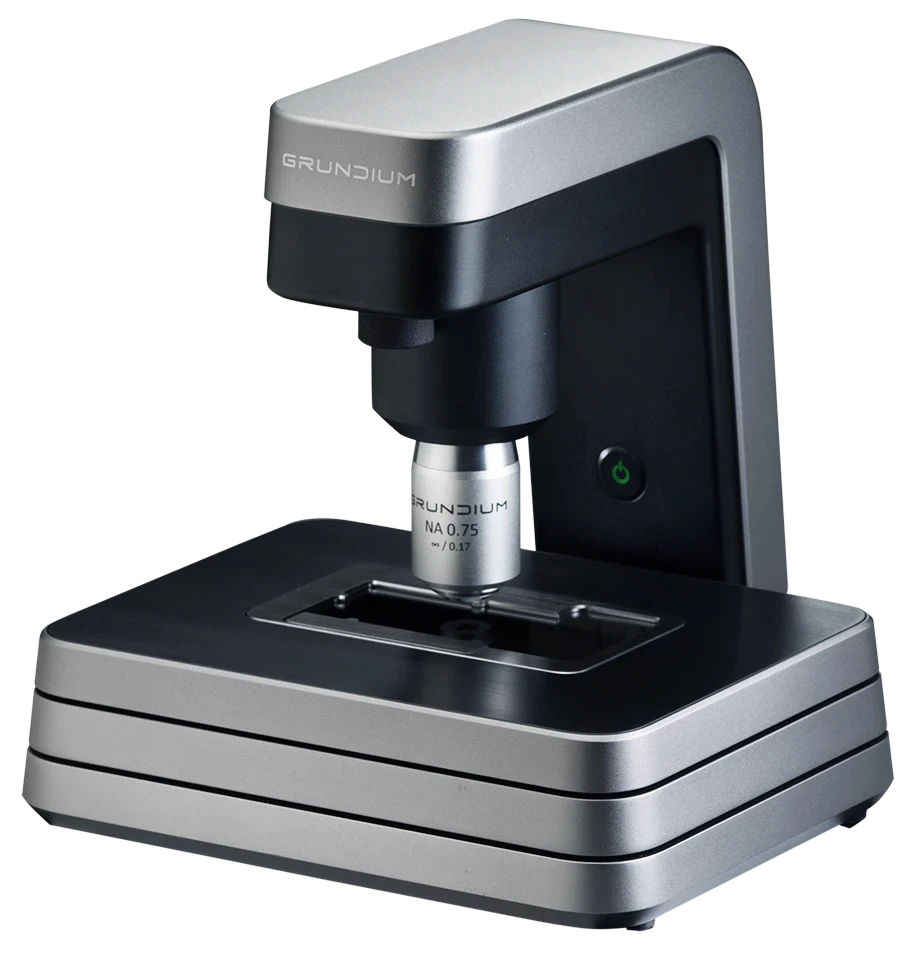
Two beautiful and powerful scanners making the best professional diagnosis available for all life. What’s the difference? Here is what makes each of the Grundium Ocus® series scanners the most practical in their respective fields.
When launched in 2018, the Grundium Ocus brought the world of digital pathology a new alternative to the big multi-slide scanners. Unlike big scanners, which are the size ranging from an oven to a refrigerator, cost an arm and a leg, and take ages to set up and train the staff to use them, the Ocus is small enough to be portable, they’re easy to use, affordable and very practical in daily use – whether for primary examination, second opinion/collaboration, education, or a digital imaging component in a network of labs.
The scanners are both optimized for a specific task, catering to different needs in high-resolution digital imaging.


The Ocus®20 revolutionizes digital pathology with its compact design and powerful capabilities, particularly excelling in frozen section samples and histopathology applications.
Its 20x magnification ensures sharp, high-quality imaging, critical for intraoperative frozen sections. This advanced technology positions the Ocus®20 as an indispensable tool for modern pathology labs.
Numerical aperture: 0.40
Resolution: 0.50 μm/pix
Depth of field: 5 μm
Image sensor: 12Mpx
Internal storage: 500 Gb


With its impressive 40x magnification, the Ocus®40 delivers unparalleled clarity and detail, perfect for precise analysis of tissue samples.
Whether it's examining complex histopathological specimens or conducting in-depth research, the Ocus®40's crystal-clear images provides the utmost accuracy and reliability.
Numerical aperture: 0.75
Resolution: 0.25 μm/pix
Depth of field: 1 μm
Image sensor: 12Mpx
Internal storage: 500 Gb
The Grundium Ocus scanners work like a webserver. A scanned slide can easily be viewed online by logging in on any computer with a web browser (no dedicated computer or software required). The Remote Live View feature also lends itself to making rapid onsite evaluation.
By sharing the controls of the scanner, a group of experts can all simultaneously collaborate on the same slide placed in one microscope scanner. Not only does this make educational purposes and group work exceptionally simple, but it’s so easy a second opinion is just a click away.
The Ocus scanners are designed and built by the highly experienced engineers who created the flagship cameras on Nokia mobile phones. That same expertise in high-precision imaging is now applied to digital microscopy with a patented imaging system that makes the sharpest images in the business.
Read more about our patents on how images are focused and stitched.
The Ocus scanners are built compact, constructed with a device hardware architecture adapted from the world of mobile phones. This means the Ocus scanners are significantly more affordable than large multislide scanners, or even most secondary single slide scanners.
Unlike large multislide scanners, which may require a room of their own with a calibrated, perfectly level table to rest on, the Ocus® scanners are about the size of a volleyball: 20 x 20 20 cm (ca. 8” x 8” x 8”). They are small enough to find a spot in any lab or any desk. The Grundium Ocus® scanners travel anywhere in a case small enough for aircraft cabins (available for order separately).
The user interface is so intuitive that anybody can be trained to use the Ocus in less than 15 minutes. This small scanner is very robust and it doesn’t even require a perfectly level desk to stand on. Many hospitals use an Ocus on a cart, wheeling it to wherever it is needed at the time.
Once a sample is prepared in a glass slide it’s a quick job to examine it:
Insert slide
Set up scan (10 seconds)
Scan the slide (3 minutes)
View the image file on your computer
The scanners’ user interface is fully web-based, which means they can be operated on almost any modern computer with internet connection and a web browser – no apps or extra software needed. Grundium supports all major browsers.
The scanners are particularly intuitive to use on a touchscreen device, like a tablet, where zooming in or out and moving the object happen at the touch of the fingertips. Where an ethernet connection isn’t available, both Ocus® scanners can connect to a WLAN/Wi-Fi network or a mobile hotspot.

